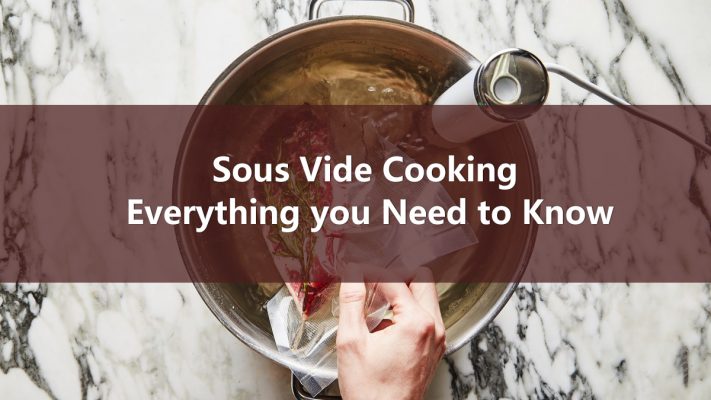The customer service team is always listening, taking notes, and quantifying complaints to ensure our products are continually improved. Due to selling directly to you, the customer, via Amazon, we can use product reviews to help us improve our existing products or help further development of new products.
Table of Contents
Sous vide is currently one of the biggest trends in cooking right now. This method involves slowly cooking food in a bath of warm water at precise temperatures; usually, it requires home cooks to shell out for fancy sous-vide cooker or immersion circulator that can be very expensive. However, the reality is that you can skip the cooker and just use a quality food thermometer to properly measure food temperature and water temperature as you cook. Here is everything you need to know about the idea of sous vide cooking without having to get an immersion circulator.
Is It Possible to Sous Vide Without a Sous Vide Cooker?
Before getting further into the detailed step-by-step instructions, here is a basic summary of how sous vide works when you do not have a cooker. A lot of people think the circulator is an essential part of sous vide cooking, but the reality is that you can skip this step.
The name “sous vide” itself simply means “under vacuum,” and it refers to the bag you seal around the food you want to cook. After sealing the bag, you just lower it into your desired temperature of water. This might seem like an odd way of cooking, especially when the water just feels warm instead of hot, but it can be very safe.
The key to doing sous vide without a cooker is all in the thermometer you use. You need to make sure you hold the water at a certain temperature range for a certain amount of time. This allows the food to heat up to the required temperature and cook to your desired level of doneness. The end result is food that is moist and not overdone along the outer edges.
Step-by-step Guide to Using a Meat Thermometer to Sous Vide
Are you ready to get started with cooking now? Make sure you have your food, a plastic Ziploc bag, a stove, water, and a quality digital thermometer on hand before you begin.
1. Vacuum Seal Your Food in a Bag
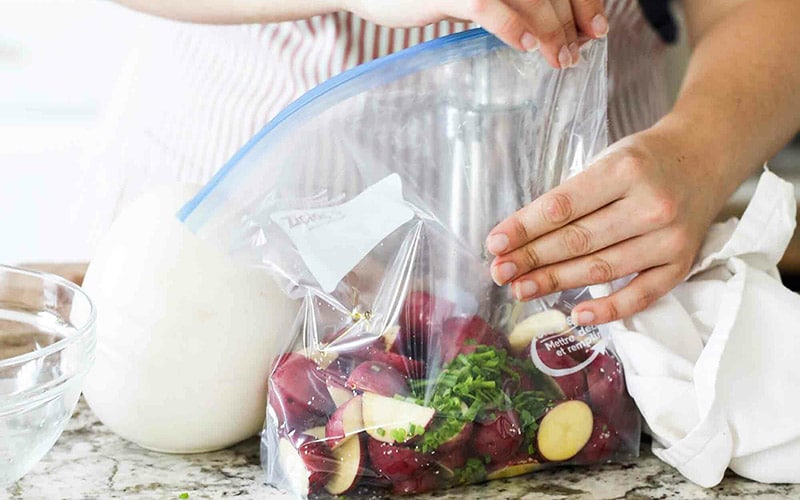
Start by gently seasoning your food with a little salt, pepper, and potentially some herbs, butter, or olive oil. Then you need to put the food into a plastic bag to cook it. If you have a vacuum sealer, all you have to do is suck the air out of the bag and seal it closed. However, those who do not have this equipment can just use a standard freezer Ziploc bag, since these are safe to temperatures of up to 195 degrees Fahrenheit and sous vide temperatures are far lower.
To remove all the air from a Ziploc bag and get a vacuum seal, close the bag most of the way, leaving one inch along the side. Gently lower the bag into the water until the only part not submerged is the unzipped inch. Zip it up and remove it to get the perfect vacuum seal.
2. Bring Your Water to the Appropriate Temperature
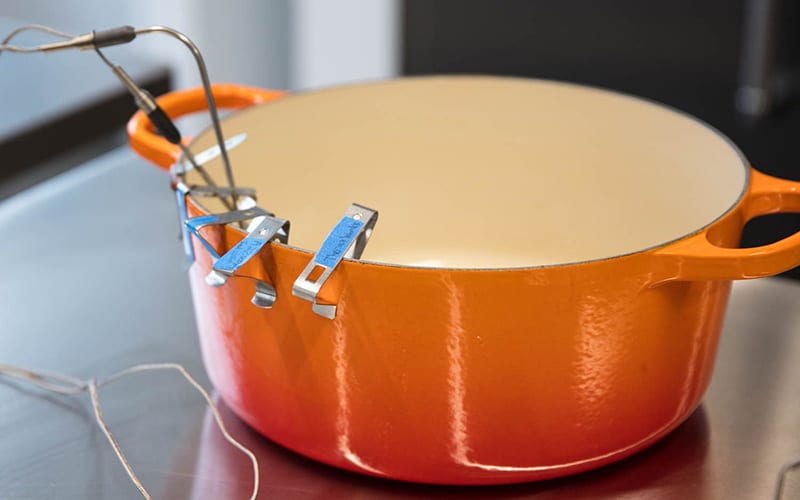
The key to sous vide cooking without a cooker is a stove top method. Put a container large enough to hold your water and the food on the stove at medium-low heat. If possible, pick something with thick sides like a Dutch oven, so it will lose heat at a slower rate.
Mount your digital thermometer probe on the side of the pot with a clip, so it is inside the water. Adjust the temperature of the stove to get it to the precise temperature you need for your sous vide recipe. Expect it to fluctuate a degree or two due to evaporation, but try to get it at a steady temperature.
3. Cook the Food
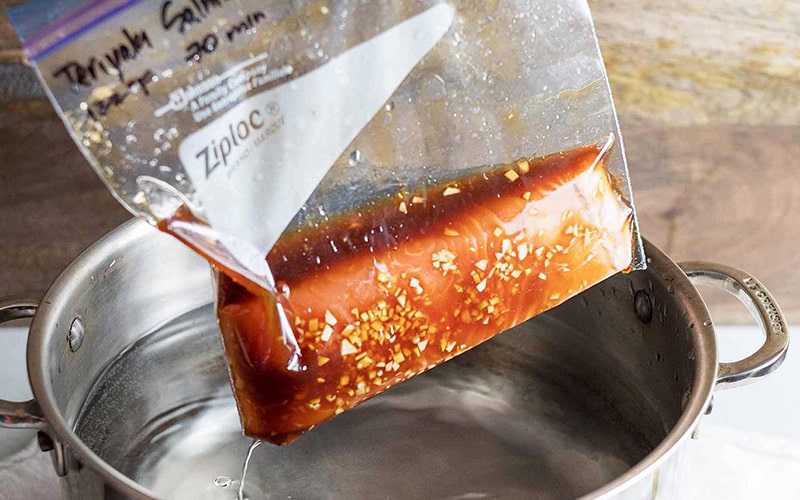
Once the temperature is set, put your vacuum sealed bag of food inside the water. If using a Ziploc bag, clip the top to the side of the pot, so the zipper seal is not fully submerged. Wait until the water is back to the desired temperature and then cook the food for the appropriate amount of time.
If you are not following a specific recipe, use this handy Sous Vide Time and Temperature Guide from Chef Steps to make sure your protein reaches safe levels before removing it. Try to keep an eye on your digital thermometer the entire time the food is cooking. You may need to adjust the heat or add a little water to get temperatures to your preferred level.
4. Measure the Internal Temperature to Check for Doneness
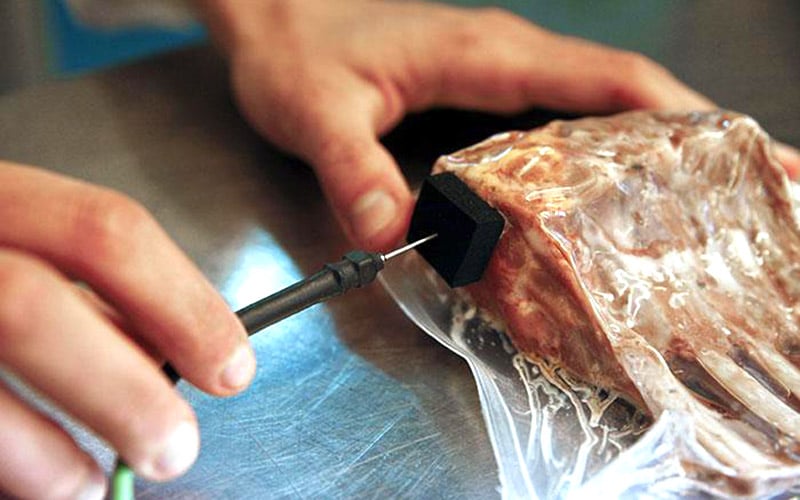
Remember that the most essential step in telling if your food is ready to cook is checking the internal temperature. You need to make sure that every part of the food reaches safe temperatures to ensure it is fully cooked. The best way to do this will be with a ThermoPro TP-20 Digital Wireless Meat Thermometer. This handy thermometer has dual probes so you can test the meat while still monitoring the water temperatures. There are two different ways to use the meat thermometer to check the internal temperature of your meat.
The ideal way is to measure the meat the entire time you are cooking. This requires you to get special self-sealing high-temperature foam tape. You stick the tape to the outside of the bag and insert the probe through the tape and bag until it reaches the middle of the meat. The tape then seals around the probe, allowing you to maintain a vacuum seal while cooking the meat with the temperature probe inserted. This method has the advantage of letting you compare the internal temperature to the water temperature so you can see exactly when the protein is finished cooking.
For those who do not have self-sealing tape, it is fine to just wait until the end of the cooking time to measure the internal temperature. To do this, remove the protein from the water, open the bag, and insert the probe until it is in the middle of the protein. Check to see if the temperature is appropriately high. If it is not, take out the probe, vacuum the bag again, seal it, and cook it a little longer. Check every 20 minutes until done.
Final Thoughts
As you can see, it is possible to sous vide without having to get expensive kitchen equipment. The results are not quite as precise as sous vide cooker, but they are still far superior to traditional cooking methods. A good digital thermometer like the ThermoPro lets you make sure your water stays within one to two degrees of your target temperature throughout the whole cook time. As long as you keep a steady water temperature and make sure you set aside enough time for cooking, you can get delicious results for steak, chicken, fish, and more.

